

Floating Manipulative Therapy offers clinical indications in physical therapy and rehabilitation settings. It can be used to treat back, shoulder, and neck pain before or after surgery, as well as in post-stroke rehab.
Testimonials
Further research in rehabilitation is needed.
While studies of ProtecFMT show promise, research is limited on its use in a rehabilitation setting; however, studies of manual therapy, decompressive therapy, and floating therapy have strong evidence in the rehabilitation literature. Further research is needed to validate ProtecFMT as a rehabilitation tool with opportunities to explore the following areas:
- Safety: Fall prevention
- Safety: Injuries associated with physical therapy
- Efficacy: Optimal intensity, duration, and frequency
- IFU: Post-operative rehabilitation
- Safety & Efficacy: Long-term clinical and longitudinal outcomes
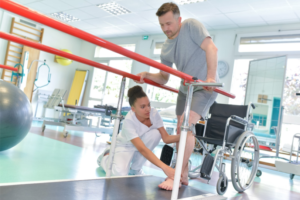
Research Presentation
Future directions of a novel rehabilitation device.
The Future of Rehabilitation Discussion Speakers

Doug Younger is the Founder and CEO of 3STEPS4WARD, a technology savvy marketing company that helps startups and entrepreneurs succeed with digital marketing. Doug and his team are a full service minority owned small business marketing consulting and creative agency driven by the beliefs of positive social responsibility, mutually beneficial business, and personal reinvention.

Dr. Varish teaches Chiropractic Technician and Chiropractic Radiological Technician certification courses in physiological therapeutics and in radiology. She is also an instructor for continuing education courses for Doctors of Chiropractic, CT’s and CRT’s with topics ranging from physiological therapeutics, anatomy, radiology, nutrition and clinical issues. Dr. Wendy Varish practices at Howards Grove Chiropractic.
Proposal 1: Improving Patient & Worker Safety
Fall Prevention Reduction During Inpatient Rehabilitation
As a stationary device that does not require gait positioning, ProtecFMT may benefit patients who may be too unsteady to undergo therapy with a gait belt.
Using ProtecFMT as a bridge to more intensive therapy while securing patients and minimizing their fall risk could be a promising area of future study.
Potential Outcome: Reduction in falls per unit time
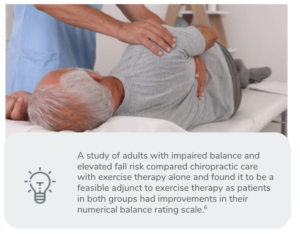
*Works in progress
Proposal 2: Improving Patient & Worker Safety
Injuries Associated with Physical Therapy
By using a proprietary pelvic stabilizer and hydraulic chair mechanism, ProtecFMT allows therapists to administer therapeutic exercises while their patients’ weight bearing forces are reduced therefore reducing risk of injury to both therapist and patient.
Research on the use of ProtecFMT in deconditioned patients, especially those with a high BMI, may potentially demonstrate benefit in reducing occupational injuries among physical therapists and injuries sustained by patients during therapy.
Potential Outcome: Reduction in injuries per unit time
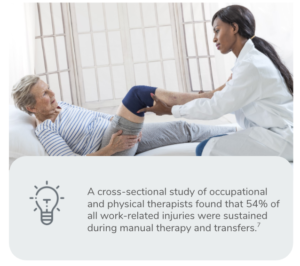
*Works in progress
Proposal 3: Demonstrate efficacy of therapy
Optimal Intensity, Duration, and Frequency for Rehabilitation
Studies of ProtecFMT have shown benefit to patients with as little as twenty minutes of use per session; however, little is known about the optimal duration and frequency of individual sessions with ProtecFMT and the duration of therapy overall.
Potential Outcome: Improved therapy & patient performance
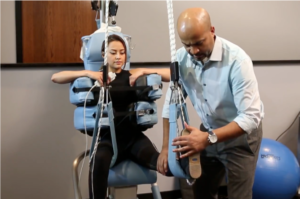
*Works in progress
Proposal 4: Expanding Patient Selection Criteria
Pre-Operative Patient Consideration (Upstream of Surgery)
Post-operative Inpatient Rehabilitation (Downstream of Surgery)
In our preliminary interviews, orthopedic surgeons felt that ProtecFMT could be beneficial to rehabilitating patients after procedures like total knee and hip arthroplasties since it can isolate motion segments while reducing weight-bearing forces.
Studies of ProtecFMT have demonstrated range of motion increases and future research on its role in stretching and range of motion may benefit patients rehabilitating post-operatively.
Potential Outcome: Expanded patient participation
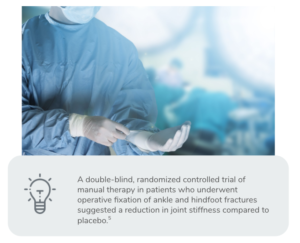
*Works in progress
Proposal 5: Clinical Trial Evaluating Safety & Efficacy
Long-term Clinical and Longitudinal Outcomes
Larger, prospective, randomized trials comparing ProtecFMT to other treatment modalities or as a therapeutic adjunct in different patient populations will be needed to validate the use of ProtecFMT as a rehabilitation tool.
Both long-term outcome data and data on adverse events will be crucial in supporting the use of ProtecFMT in rehabilitation settings.
Potential Outcome: Expand IFU and utilization

*Works in progress






